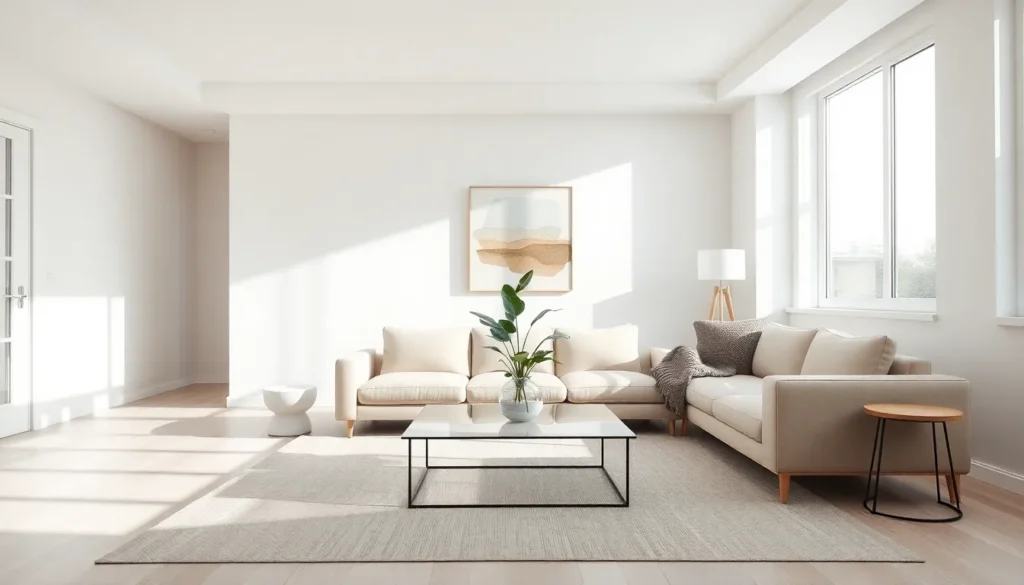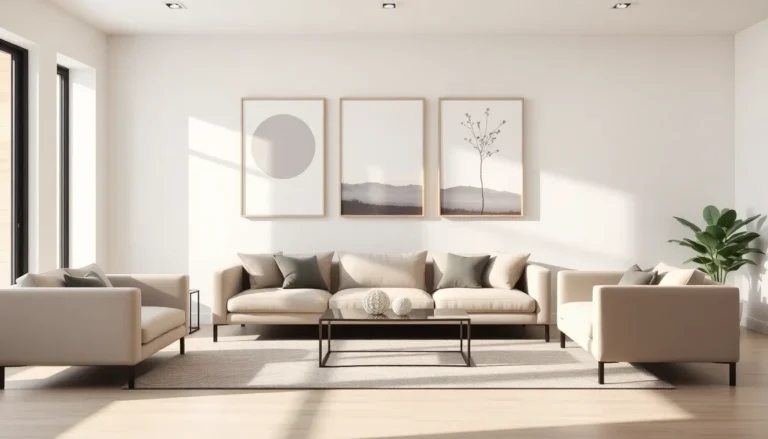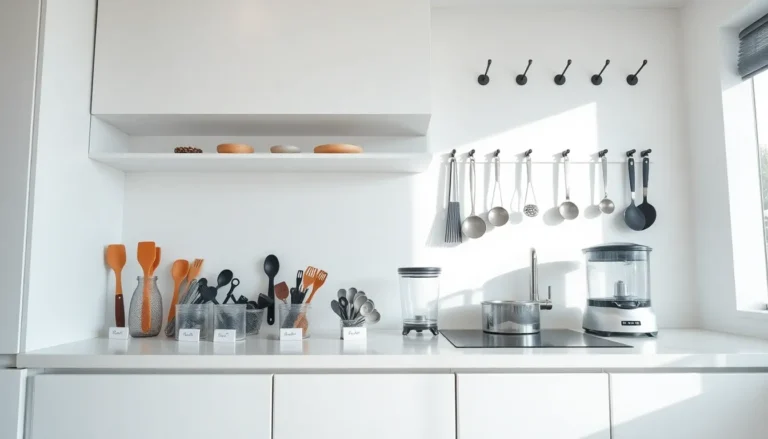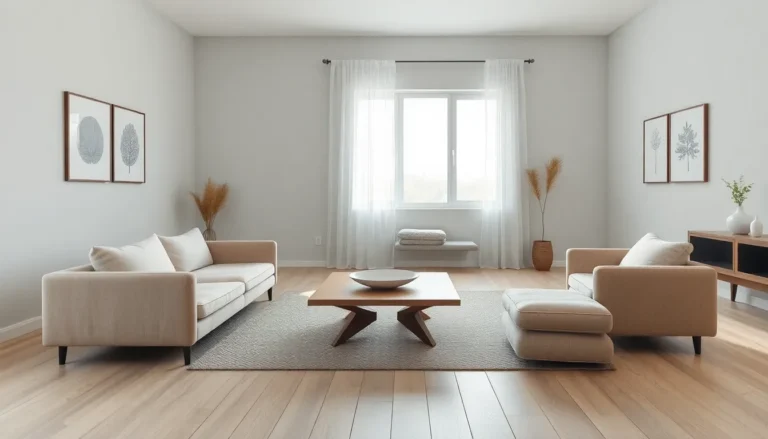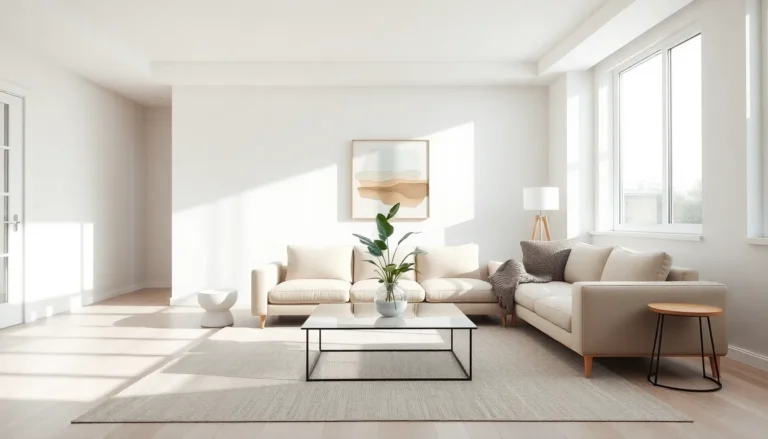In a world overflowing with clutter and chaos, why not create a haven of peace right in your living room? Minimalist living room design isn’t just a trend: it’s a lifestyle choice that brings simplicity, style, and serenity into everyday life. Imagine stepping into a space that’s as clean as your conscience after a good day. With a few well-placed pieces and thoughtful choices, you can turn that dream into reality. So, buckle up as we jump into the art of minimalist design and discover how less can truly be more.
Table of Contents
ToggleUnderstanding Minimalist Design Principles
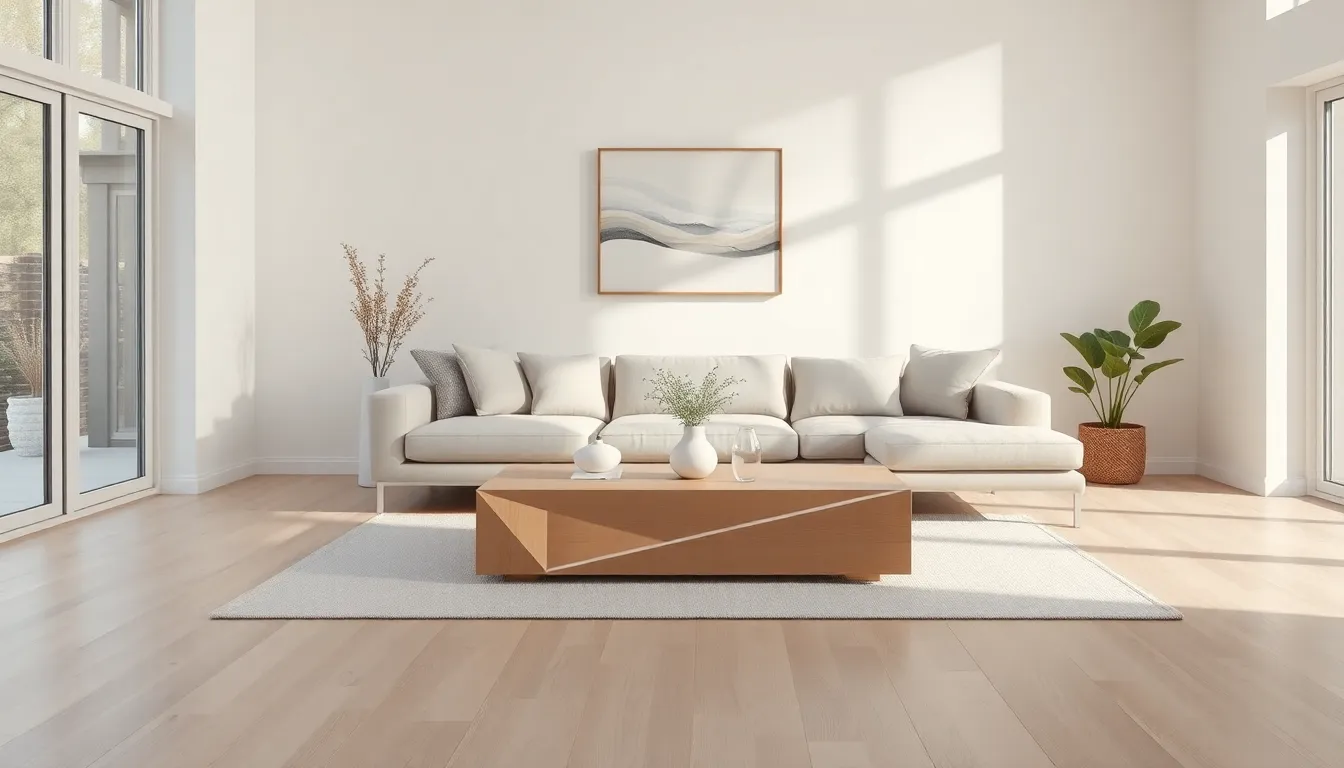
Minimalist design revolves around the idea of ‘less is more’. It emphasizes function over unnecessary embellishments. To grasp this concept fully, one must understand its core principles: simplicity, functionality, and intentionality. Every piece in a minimalist living room is chosen for its practical purpose and beauty. Think of it as crafting a narrative where every character plays a vital role without cluttering the storyline. So, less visual noise not only enhances aesthetic appeal but also fosters a calm atmosphere. When implementing minimalist principles, consider how each item serves you. Does the oversized coffee table bring you joy, or does it merely take up space?
In minimalist design, each line is purposeful, and every color conveys an emotion. The goal is to create a balanced space that feels open and inviting, not sparse. Opt for clean lines, geometric shapes, and balanced proportions to achieve a seamless flow.
The Benefits of Minimalist Living Rooms
Why consider a minimalist living room design? The advantages are plentiful. First and foremost, reduced clutter leads to improved mental clarity. Imagine coming home to a space where your mind is free to wander rather than get caught up in the chaos of what-nots and knick-knacks. Besides, minimalism promotes sustainability. Fewer items mean fewer resources consumed. It’s a win-win in a society that’s beginning to recognize the importance of eco-conscious living.
The financial benefits of minimalism also play a significant role. By prioritizing quality over quantity, individuals often find themselves investing in fewer, but higher-quality pieces. This means less frequent replacements and savings in the long run. Also, a minimalist space can result in an increased sense of freedom: with fewer possessions, it’s easier to move, redecorate, or even relocate. Eventually, a minimalist living room encapsulates both tranquility and efficiency.
Key Elements of Minimalist Living Room Design
Creating a minimalist living room involves focusing on key design elements that contribute to the overall aesthetic. Here’s what that entails:
Color Schemes for Minimalist Living Rooms
A neutral color palette is essential for any minimalist space. Shades of white, beige, grey, and soft pastels can create a serene backdrop. These colors reflect light and create an illusion of larger spaces. Layering subtle tones can add depth without overwhelming the senses.
Furniture Selection for a Minimalist Aesthetic
When choosing furniture, prioritize multifunctional pieces that serve more than one purpose. For example, a sleek ottoman can double as a coffee table and storage space. Look for furnishings with clean lines and simple designs. Avoid ornate details, and instead, select items that embody elegance in their simplicity.
Incorporating Textures and Materials
Textures play a crucial role in keeping a minimalist space from feeling sterile. Choose materials like wood, metal, or natural fibers to add warmth and interest. A soft wool rug, a leather chair, or a woven basket can introduce depth and subtlety while adhering to the minimalist ethos.
Maximizing Space and Natural Light
In minimalist living room design, space and light are two vital components that enhance aesthetics and functionality. Rooms that are bright and airy contribute to a peaceful ambiance.
Decor Tips for a Minimalist Living Room
In terms of decor, less is indeed more. Select one or two statement pieces, think artwork or a sculpture, that draw attention without feeling overwhelming. Leveraging negative space allows the eye to rest, enabling a more tranquil environment. Accessories should be life-enhancing rather than clutter-inducing, so choose thoughtfully.
How to Personalize a Minimalist Space
Personalization is essential even in the most minimalist settings. Incorporate items that reflect personal style, like a cherished photo in a simple frame or a unique vase. This way, the minimalist essence remains intact, while character seeps through effortlessly. Eventually, it’s about striking the right balance, keeping the space uncluttered while allowing it to resonate with who you are.

